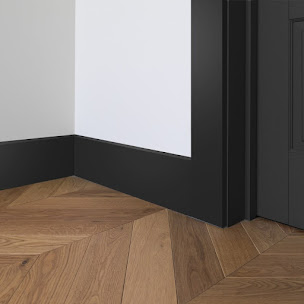Durability of Rubber Strips - How Long Do They Last?
Rubber strips are extensively used by industries and in domestic applications because of their durability, hardness, and resistance to wear and tear. From the gaskets of automobiles to weather-stripping door and window frames, Rubber Strips serve the function of insulation, shock absorption, and toughening.
Types of Rubber and Their Lifespan:
The durability of rubber strips is mostly dependent on the rubber used to make them. Each rubber has its own characteristics, making it tolerant of varying environments:
- Natural Rubber (NR): It is too resistant to weathering, UV, or ozone. Natural rubber strips may have a life span of 3–5 years in outdoor exposure and 10 years indoors if sunlight and temperature extremes are not encountered.
- Neoprene Rubber: Neoprene is extremely weather-resistant, ozone-resistant, and weak chemical-resistant and can be utilized optimally for outdoor and sea conditions. Neoprene rubber strips generally last for 10–15 years in normal conditions.
- Nitrile Rubber (NBR): Used extensively in the automotive as well as industrial sectors, rubber made from nitrile is resistant to chemicals, fuel, and oil. Nitrile strips typically last for 5–10 years depending upon weather and exposure to oils.
- Silicone Rubber: Silicone rubber strips are prized for their very good temperature resistance, from very low to very high temperatures. They have UV and ozone cracking resistance. Silicone strips have a lifespan of 20+ years, especially in very hostile outdoor exposures or heat processes.
Butyl Rubber
In seal uses, butyl rubber strips have a lifespan of 15–20 years.
Environmental Factors Affecting Durability
Rubber strips undergo multiple environmental stresses that can considerably shorten or prolong their lifespan. Among the most important are
- Sunlight (UV Exposure): UV radiation leads to deterioration of rubber, brittleness, and loss of elasticity with time, a process referred to as UV aging. EPDM and silicone rubbers are considerably more resistant to UV degradation than natural rubber.
- Ozone: It causes surface cracking, particularly in nitrile and natural rubber.
- Temperature: Rubber becomes brittle with low temperatures, while very hot temperatures cause oxidation and aging. Silicone is the most temperature-resistant, while natural rubber ages very quickly in heat.
- Moisture and Chemicals: Rubber strips degrade because of water and chemicals like oils, fuels, and acids.
Usage and Mechanical Stress
In addition to environmental factors, mechanical usage of Rubber Seal Strip also dictates their life span:
- Compression and Flexing: Ongoing flexing, stretching, or compression causes acceleration of fatigue and cracking.
- Load and Pressure: Rubber strips utilized as dampeners or seals can deteriorate more quickly under full load.
- Abrasion: Strips that experience friction wear down more quickly unless composed of abrasion-resistant rubber.
Signs of Rubber Strip Degradation
Even the toughest rubber strips will wear out eventually. Identification of signs of aging allows for replacement in time before failure:
- Surface cracking or splitting
- Hardening or loss of flexibility
- Color change (oxidative graying or whitening)
- Stickiness or softening due to chemical attack
- Decreased sealing performance or high leakage
If these signs are observed, replace the strip to ensure maximum safety and performance.
How to Prolong the Life of Rubber Strips:
With proper protection and maintenance, rubber strip life can be extended considerably:
- Correct Storage: Rubber strips must not be exposed to sunlight, ozone (in the vicinity of electric motors), and humidity. Correct storage will increase shelf life to as much as 5–10 years before fitting.
- Protective Coatings: Use of anti-ozone or UV-resistant coatings will reduce deterioration for external use.
- Lubrication: Coating with silicone grease or other lubricants that are rubber compatible in gaskets and seals inhibits drying and cracking.
The life of Rubber Strips UK is very diverse, depending on rubber type, exposure to weather, and frequency of mechanical use. Natural rubber can last for just a few years when exposed to the outdoors, yet newer materials such as silicone and EPDM last for decades without decreasing in effectiveness. Regular storage, washing, and shielding can extend their useful lifespan greatly.
By and large, rubber strips can have a lifespan of between 5 and 20+ years, longer as long as the right rubber for the job in hand is chosen. Investing in good rubber strips made for the conditions not only ensures longevity but also enhances safety, energy efficiency, and overall performance.




Comments
Post a Comment